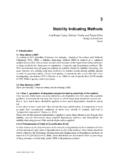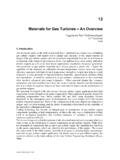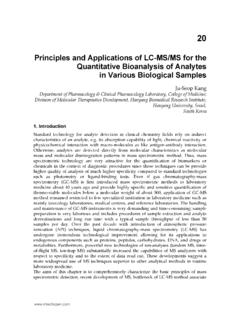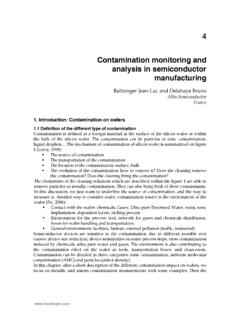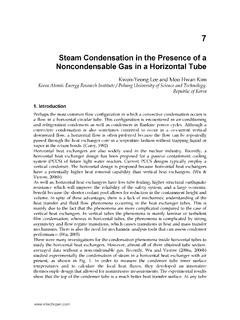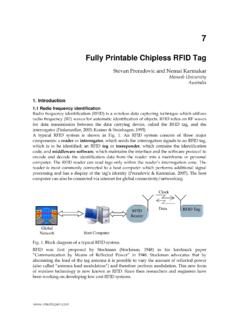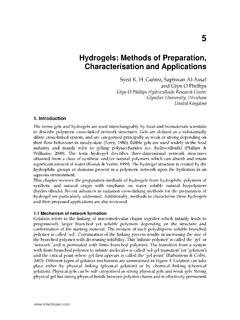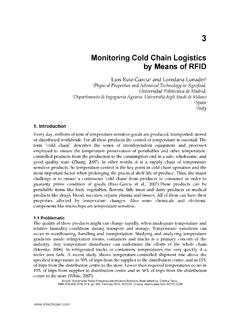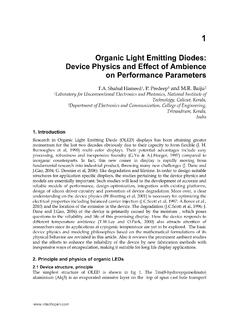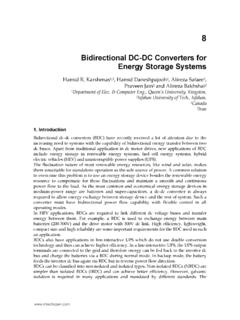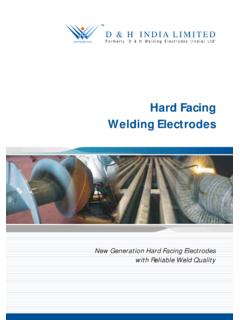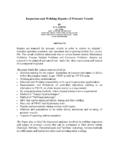Transcription of ALLVAC 718 Plus™ Superalloy for Aircraft Engine …
1 4 ALLVAC 718 Plus Superalloy for Aircraft Engine applications Melih Cemal Kushan1, Sinem Cevik Uzgur2, Yagiz Uzunonat3 and Fehmi Diltemiz4 1 Eskisehir Osmangazi University 2 Ondokuz Mayis University 3 Anadolu University 4 Air Supply and Maintenance Base Turkey 1. Introduction Innovations on the aerospace and Aircraft industry have been throwing light upon building to future s engineering architecture at the today s globalization world where technology is the indispensable part of life. On the basis of aviation sector, the improvements of materials used in Aircraft gas turbine engines which constitute 50 % of total Aircraft weight must protect its actuality continuously.
2 On the other hand utilization of super alloys in aerospace and defense industries can not be ignored because of excellent corrosion and oxidation resistance, high strength and long creep life at elevated temperatures. Materials that can be used at the homologous temperature of Tm and still remain stable to withstand severe mechanical stresses and strains in oxidizing environments are so-called superalloys , usually based on Ni, Fe or Co (Sims et al, 1987). Nickel-based superalloys are the exceptional group of superalloys with superior materials properties. Their excellent properties range from high temperature mechanical strength, toughness to resistance to degradation in oxidizing and corrosive environment.
3 Therefore they are not only used in aerospace and Aircraft industry, but also in ship, locomotive, petro- chemistry and nuclear reactor industries. Inconel 718 is Ni-based, precipitation- hardening Superalloy with Nb as a major hardening element, used for high temperature aerospace applications very widely in recent years (Yaman & Kushan, 1998). However, the metastability of the primary strengthening (D , gamma double prime) phase is typically unacceptable for applications above about 650 C. As a result, other more costly and difficult to process alloys, like Waspalloy, are used in such applications . Although Waspalloy is strengthened primarily by D , it is still more susceptible to weld-related cracking than Inconel 718 (Otti et al, 2005).
4 In these circumstances ALLVAC 718 Plus come to stage, which is strengthened with uniform cubic FCC inter metallic D ' phase, innovated by ATI ALLVAC Company very recently. In recent years it has been becoming widespread dramatically for using of disc material in aerospace gas turbine Engine parts. The most important reason of this is the high yield and ultimate tensile strength and very good corrosion and oxidation resistance of material together with Recent Advances in Aircraft Technology 76excellent creep resistance at elevated temperatures. Fig. 1 shows that where wrought alloy 718 Plus can be used as a disc material for high pressure (HP) compressor as well as for high pressure (HP) turbine discs (Bond & Kennedy, 2005).
5 Fig. 1. Potential applications for alloy 718 PlusTM in a future high pressure core section (Bond & Kennedy, 2005). The newly innovated ALLVAC 718 Plus Superalloy which is the last version of Inconel 718 has been proceeding in the way to become a material that aerospace and defense industries never replace of any other material with combining its good mechanical properties, easy machinability and low cost. 2. Gas turbine engines Gas turbine engines, also known as jet engines, power most modern civilian and military Aircraft . Fig. 2 shows some sections of this kind of an Engine . The inlet (intake) directs outside air into the Engine . The compressor (shown in a (a) part of Fig.)
6 2) is situated at the exit of the inlet. In order to produce thrust, it is essential to compress the air before fuel is added. In an axial-flow compressor, the air flows in the direction of the shaft axis through alternate rows of stationary and rotating blades, called stators and rotors, respectively. Modern axial-flow compressors can increase the pressure 24 times in 15 stages, with each set of stators and rotors making up a stage. The compressors in most modern engines are divided into low-pressure and high-pressure sections which run off two different shafts. In the combustor, or burner (shown in a (b) part of Fig.
7 2), the compressed air is mixed with fuel and burned. Fuel is introduced through an array of spray nozzles that atomize it. An electric igniter is used to begin combustion. The combustor adds heat energy to the air stream and increases its temperature (up to about 1930 C), a process which is accompanied by a slight decrease in pressure (~ 1-2%). For best performances, the combustion temperature should be the maximum obtainable from the complete combustion of the oxygen and the fuel. However, turbine inlet temperatures currently cannot exceed about 1100 C because of material limits. Hence, only part of the compressed air is burned in the combustor; the remainder is used to cool the turbine.
8 ALLVAC 718 Plus Superalloy for Aircraft Engine applications 77 Fig. 2. Some basic sections of a gas turbine Engine (Eliaz et al, 2002). Leaving the combustor, the hot exhaust is passed through the turbine (shown in a (c) part of Fig. 2), in which the gases are partially expanded through alternate stator and rotor rows. Depending on the Engine type, the turbine may consist of one or several stages. Like the compressor, the turbine is divided into low-pressure and high-pressure sections (shown in Fig. 3), the latter being closer to the combustor. Fig. 3. The temperature and pressure profile in gas turbine (Carlos & Estrada, 2007). The turbine provides the power to turn the compressor, to which it is connected via a central shaft, as well as the power for the fuel pump, generator, and other accessories.
9 From Recent Advances in Aircraft Technology 78thermodynamics, the turbine work per mass airflow is equal to the change in the specific enthalpy of the flow from the entrance to the exit of the turbine. This change is related to the temperatures at these points. The temperature at the entrance to the turbine can be as high as 1650 C, considerably above the melting point of the material from which the blades are made. The gases, leaving the turbine at an intermediate pressure, are finally accelerated through a nozzle to reach the desired high jet-exit velocity. Because the exit velocity is greater than the free stream velocity, thrust is produced. The amount of thrust generated depends on the rate of mass flow through the Engine and the leaving jet velocity, according to Newton s Second Law.
10 Thus, the gas is accelerated to the rear, and the Engine (as well as the Aircraft ) is accelerated in the opposite direction according to Newton s Third Law (Eliaz et al, 2002). Modern gas turbines have the most advanced and sophisticated technology in all aspects; construction materials are not the exception due their extreme operating conditions. The most difficult and challenging point is the one located at the turbine inlet, because, several difficulties associated to it; like extreme temperature, high pressure, high rotational speed, vibration, small circulation area, and so on. These rush characteristics produce effects on the gas turbine components that are shown on the Table 1 (Carlos & Estrada, 2007).
